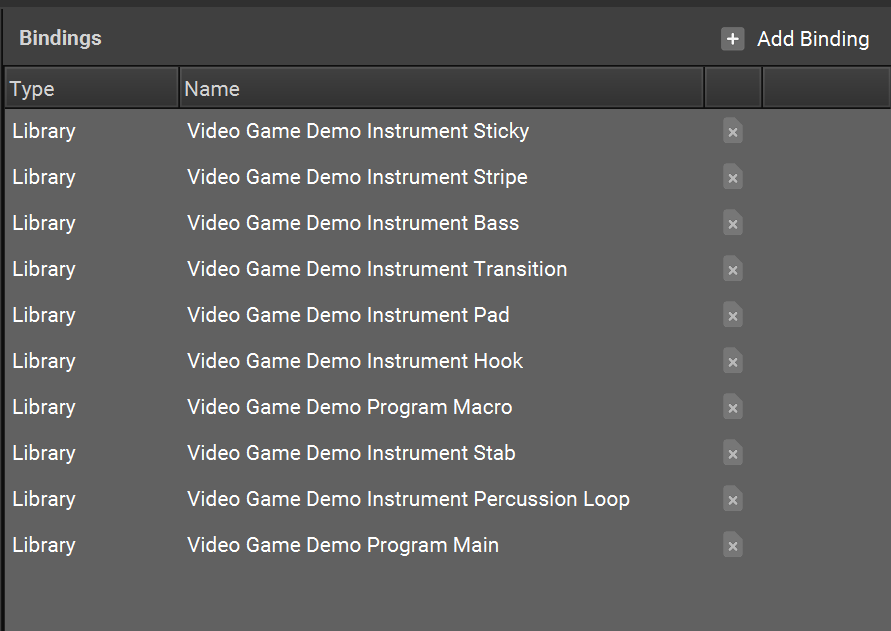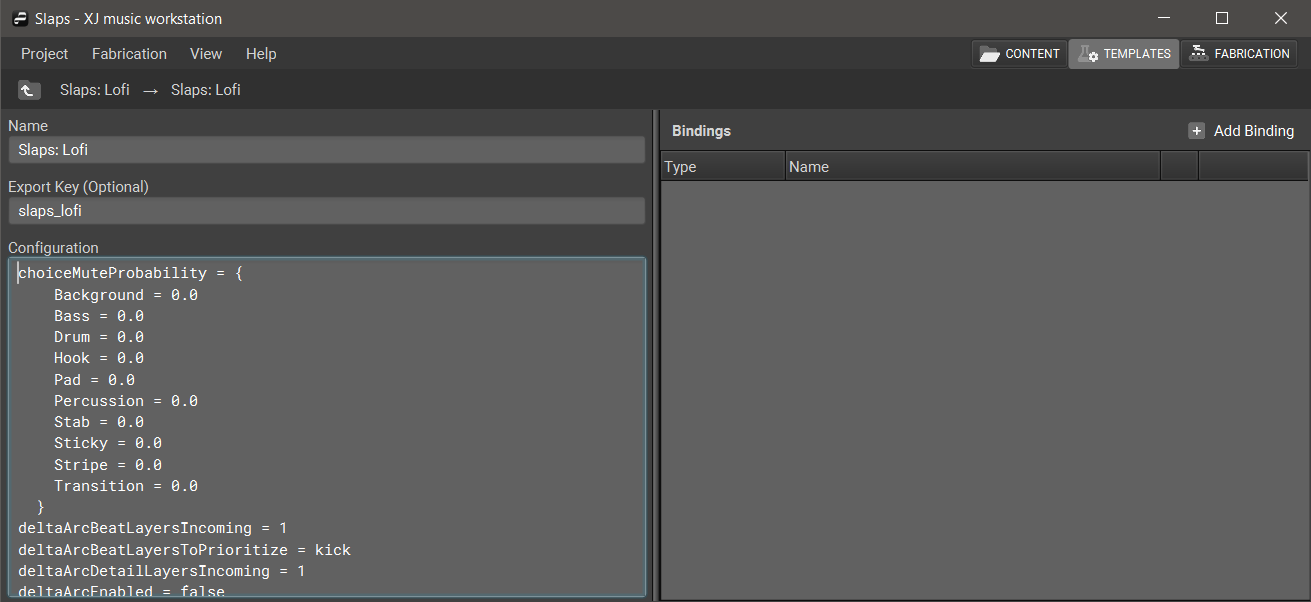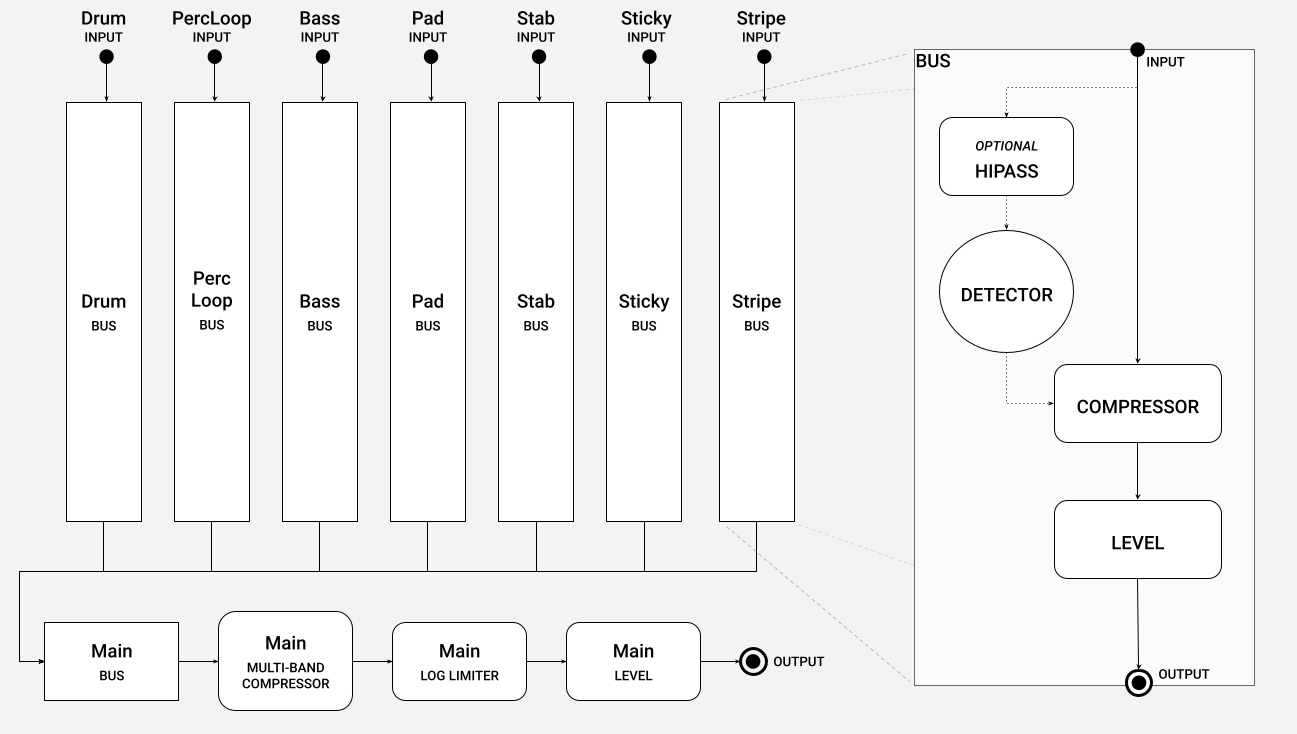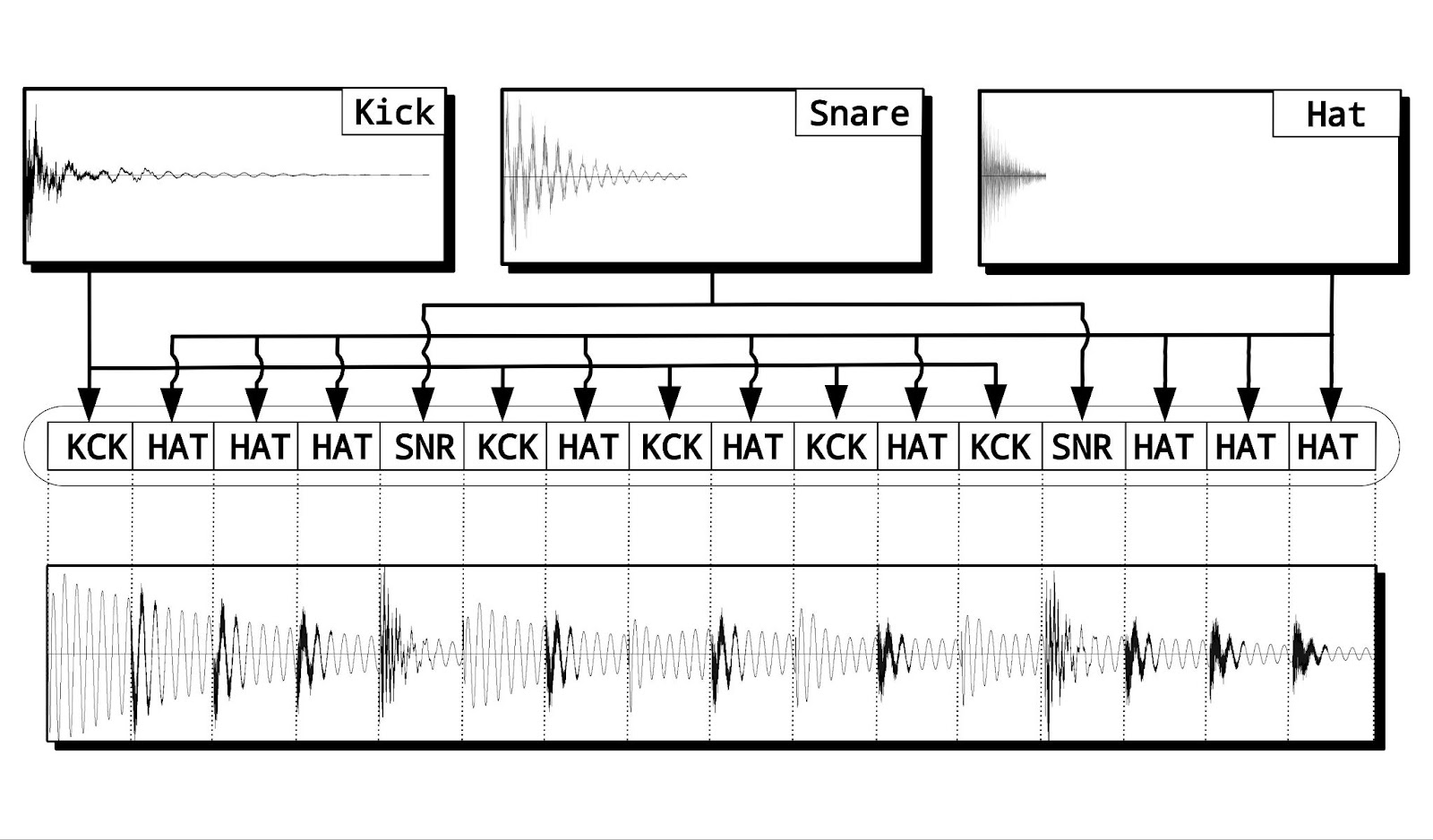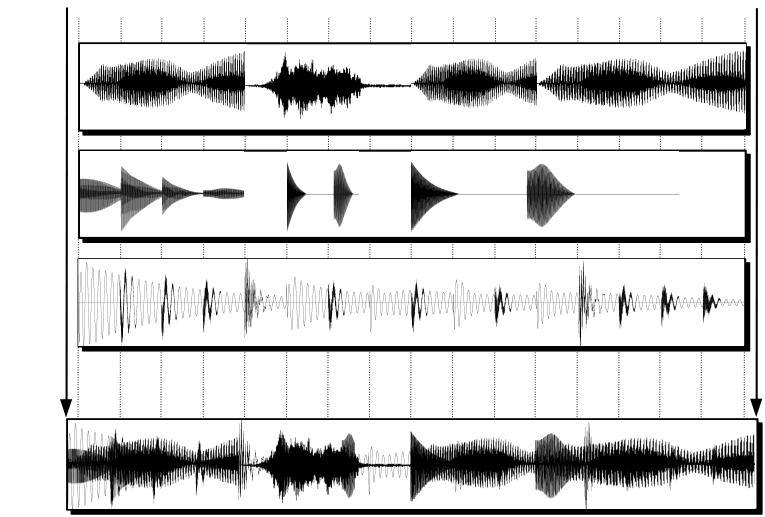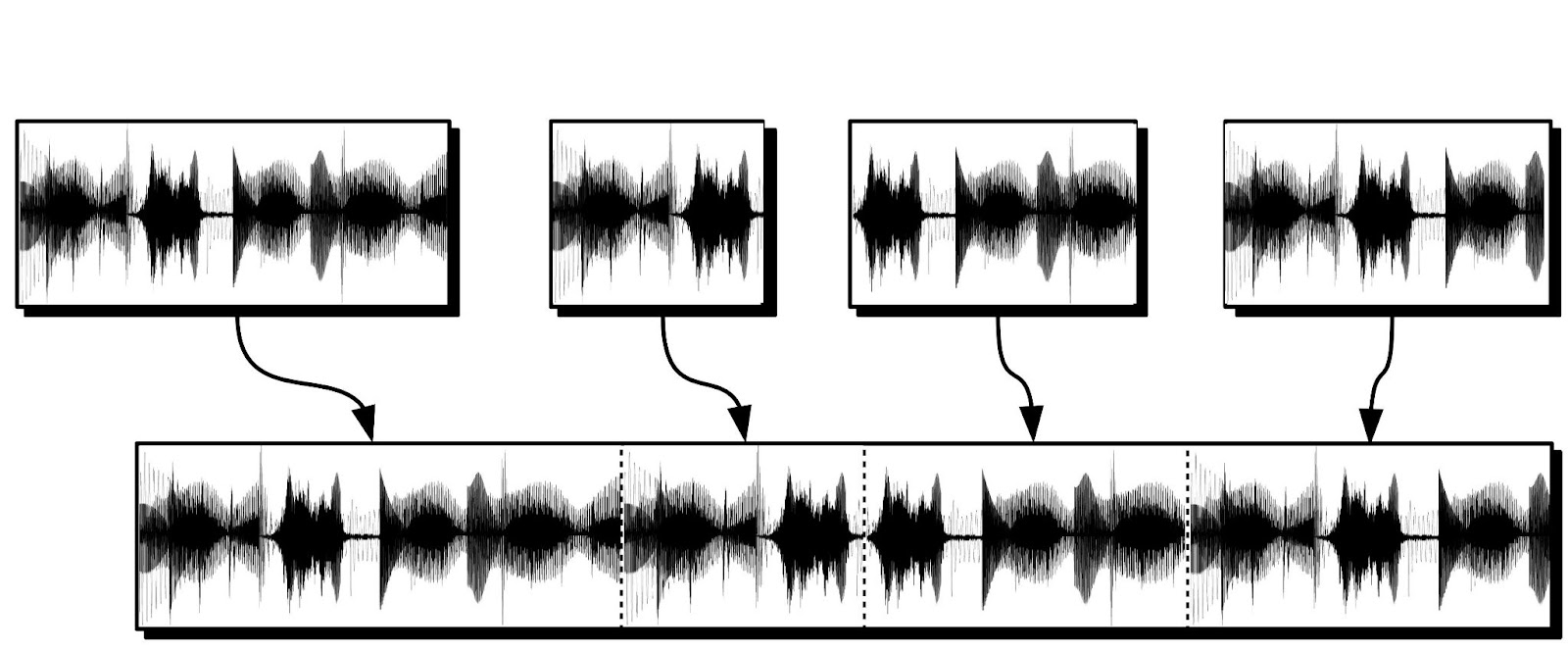| backgroundLayerMax/backgroundLayerMin | The maximum and minimum number of background Ambience Loop events selected |
| bufferAheadSeconds/bufferBeforeSeconds | The amount of seconds that the Template will buffer ahead and before* |
| choiceMuteProbabilityInstrumentType | The chance that the Instrument type will be randomly muted in a sequence, from 0.0-1.0 (0% to 100%) |
| deltaArcBeatLayersIncoming | The number of Beat Layers being input into the Delta Arc function |
| deltaArcBeatLayersToPrioritize | The Events in the Sequence to be prioritized in the Delta Arc function |
| deltaArcDetailLayersIncoming | The number of Detail Layers being input into the Delta Arc function |
| deltaArcEnabled | Enables or disables the Delta Arc function |
| densityCeiling/densityFloor | The upper and lower limits of Sequence Density (0.0-1.0) |
| detailLayerOrder | The order in which Instrument types are prioritized |
| dubMasterVolumeInstrumentType | The master volume of an Instrument type |
| eventNamesLarge/eventNamesMedium/eventNamesSmall | Defines the naming convention for Event sizes |
| instrumentTypesForAudioLengthFinalization | Determines which Instrument types are muted when another instance of itself plays or the sequence ends |
| instrumentTypesForInversionSeeking | Determines which Instrument types are able to have their chords inverted |
| mainProgramLengthMaxDelta | Sets the length of Main Program as they relate to Delta Arcs |
| memeTaxonomy | The words or phrases XJ will define as Memes (Meme) and the categories that Memes fall into (Category) |
| mixerHighpassThresholdHz/mixerLowpassThresholdHz | The upper and lower thresholds for the High Pass and Low Pass EQs |
| outputChannels | The number of output channels |
| outputContainer | Defines the output container used, e.g ‘OGG’ |
| outputFrameRate | The output frame rate |
| outputSampleBits | The output bit-depth |
| percLoopLayerMax/percLoopLayerMin | The maximum or minimum amount of Percussion Loop Layers that will play in the Chain |
| stickyBunEnabled | Enables or disables the Sticky Buns function |
| transitionLayerMax/transitionLayerMin | The maximum or minimum amount of Transition Layers that will play in the Chain |
| vmResourceLimitCpu | * it isn’t recommended that users make changes to this setting. |
| vmResourceLimitMemoryGb | * it isn’t recommended that users make changes to this setting. |
| vmResourceRequestCpu | * it isn’t recommended that users make changes to this setting. |
| vmResourceRequestMemoryGb | * it isn’t recommended that users make changes to this setting. |


